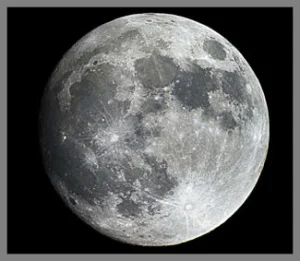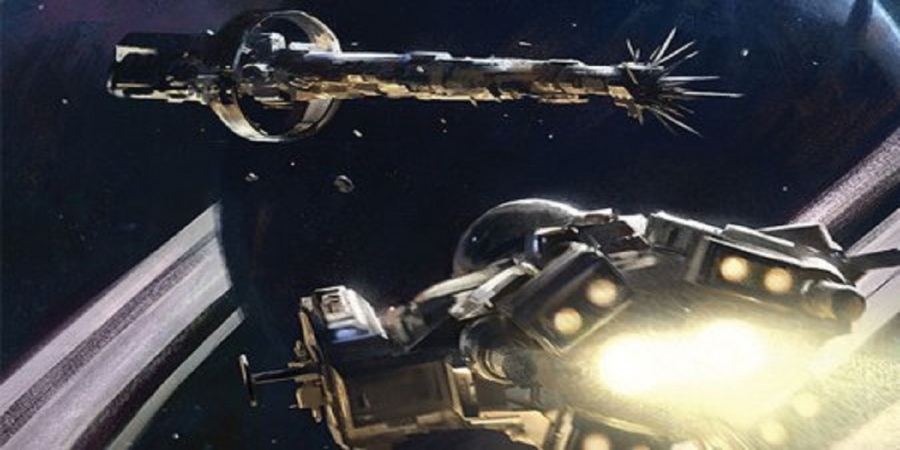Science-fiction attracts those readers and writers with imaginations that point towards the future. It is one of the few genres where any technology is possible if you can picture it in your head and express it on the page. Any vehicle, from flying cars to ships the size of planets, is fair game. Science-fiction can inhabit any setting, star any character. If you can describe it, it’s real. There is something about the genre which draws everyone in, regardless of their normal reading habits. Just look at the Star Wars saga or the Marvel Cinematic Universe. People who would normally never read a book about space battles or robots fall in love with Luke Skywalker and Iron Man. It helps that science-fiction is a melting pot. It sets a technological backdrop for the story, but the story can be something else entirely.
The science-fiction genre is closely associated with fantasy, so it was not much of a leap for Tim Pratt to start developing a science-fiction story of his own. Pratt has been in the public eye since at least 2002, when his short story “Little Gods” was nominated for the Nebula Award for Best Short Story. He has published continuously since then, writing even more short stories and a multitude of novels and even winning a Hugo Award, but the focus always seemed to shift back to fantasy. Despite that, the draw of space travel, sleek ships cascading by giant stations, was ever present. So, Tim Pratt wrote a space opera. In writing The Wrong Stars, Pratt tackled a subset of science-fiction that so few can get right. Grandiose plots, galaxy spanning conspiracies, fleets of ships battling it out for the fate of all life. Space operas are meant to capture a sense of the epic.
The Wrong Stars follows the crew of The White Raven, a human-manned ship serving as freelance law enforcement officers for the government around Neptune. In Pratt’s future, humanity has spread throughout the solar system and beyond, becoming fragmented in the journey. Earth is autonomous, with the Moon being considered a colony, and other governing bodies springing up around Mars and Jupiter. Five hundred years before the start of the novel, however, Earth is in a major decline. So-called Goldilocks ships are launched into the vast unknown, aimed towards distant worlds where humanity hopes civilization can be reestablished after Earth’s inevitable downfall. The crews are frozen in stasis for the long journey. In the intervening years, however, aliens come to our solar system with wondrous technology. But Pratt’s aliens are unlike any other alien in science-fiction. Humans call them Liars, since every word out of their mouth is a bold-faced lie. Ask one what color the sky is and they’ll say orange. Call them out and they’ll try to explain how human eyes don’t see color in the right spectrum. Imagination at full blast.
Unfortunately, that immense imagination is also a curse. Science-fiction novels, especially space operas, have a problem with an overabundance of backstory. None of the previous paragraph describes the actual plot of the book. There are truth-telling Liars, an ancient alien empire that engaged in regular body horror, wormhole generators, and even love stories. Reading The Wrong Stars is pure entertainment, science-fiction pulp at its best. Explaining The Wrong Stars requires explaining an entire fictional history before we ever get to page one. Once the introductions are done, the plot is anything but simple. Captain Callie Machedo and her crew discover one of the Goldilocks ships, only one of the six-person crew left on board. Dr. Elena Oh is thawed out, and tells them about an ancient alien megastructure they encountered, the dangerous remnants of a galaxy-spanning empire of demigod-like beings. A rescue is planned, but of course nothing ever goes according to plan.
As I mentioned before, the book is fun, but the writing cannot always keep up with the senses Pratt wishes the reader to experience. In an effort to imbue his characters with humor, quips are common, whether they sound good to the ear or not. Serious discussions will abruptly cutoff as one character tries to make a joke that ultimately lands flat. Other times, supposedly dramatic moments are unable to muster any emotion because Pratt’s dialogue does not leave much room for expression. There is back and forth between the characters, but we often do not see what the characters are physically doing while they talk. It’s missing the little things which make discussion that much more interesting; glancing around a room, playing with one’s hair, biting nails, yawning. However, this is not a problem unique to Pratt. Science-fiction authors spend so much time describing the world around the characters, they forget to develop the characters themselves beyond a few simple descriptors.
Despite this, Pratt is able to move past several of the human problems which tend to plague genre fiction. His cast of characters is incredibly diverse, and diverse in ways the reader could not have predicted. The two point-of-view characters are bisexual, both non-white. Another character is a cyborg, a mixture of original human body parts and technology meant to both assist a disability and improve his functions. The pilot and navigator are joined together in a way which invokes body horror at first, but wonder once you become accustomed to their state. As usual for science-fiction, there is an artificial intelligence, Shall, who is fully fledged and nearly human. And then there is Lantern, the sole alien main character. A Liar who has sworn to tell the truth, she is both strange and familiar at the same time. Her biology may not resemble humans, but she is equally complex and not just a stereotype of an extraterrestrial.
Once again, I find I’ve picked a book that looks towards the future. But while Artemis was concerned with presenting a realistic take at the first human colony on the moon, The Wrong Stars is anything but. For all the destruction and threats to the galaxy our characters witness, there is an optimism at how Pratt sees the human race. In his dream, we have fundamentally changed for the better, moved past the differences that divide us today, and seized our future.
The Wrong Stars can be found online, in store, or wherever books are sold
Total read time: 11 days
Next on the list: Persepolis Rising, by James S.A. Corey


Pingback: A Note on the Next Review: The Dreaming Stars – City on the Moon